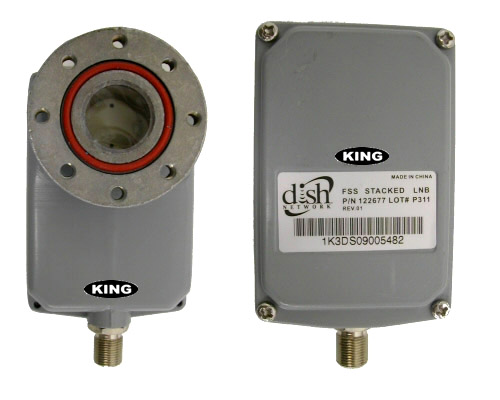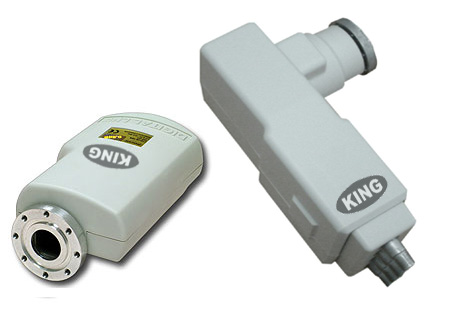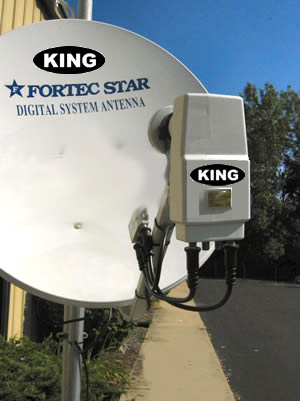"Explanation of Circular, Linear and Standard LNB"
|
Bronze Member Username: RohitkamahiPost Number: 38 Registered: May-06 | Would it be possible for someone to explain the differences between Circular and Linear LNB? What is a Standard LNB? Which lnb should be used for which satelitte? I have a Starchoice eliptical dish and a twin lnbf. Do you think this can be used to catch 119 or it's totally useless? Thank you very much in advance for all your supports. |
|
Gold Member Username: TapemanNew York City in-HD, NY Post Number: 1208 Registered: Oct-06 | FSS uses linear LNBF (like: 93, 97, 101, 121) 30" dish or bigger DSS uses Circular LNBF(like 61.5,82,91,110,119,148) 18" or bigger Your starchoice is Circular LNBF You can use it for any of this 61.5,82,91,110,119,148 For simple theory on LNBF click here: https://www.ecoustics.com/cgi-bin/bbs/show.pl?tpc=2&post=978098#POST978098 |
|
Bronze Member Username: RohitkamahiPost Number: 39 Registered: May-06 | King Tapeman. Thanks a lot for the explanation and the useful links.It was extremely helpful and I hope it will help other members of this forum as well. |
|
Gold Member Username: LklivesPost Number: 9649 Registered: Jan-06 | Post subject: Circular & Linear LNB's: What's the difference? -------------------------------------------------------------------------------- c/p OK everyone, put your polarizing sunglasses on. What's the difference? Answer: About -3dB or half the signal level. Now take your sunglasses off. Notice how bright it is in here? The difference in brightness is an example of using the wrong lnb type. Circular and Linear polarization refer to the characteristics of the radio wave that is transmitted by the satellite towards your dish/LNB. Below are links to visual comparisons of Circular (Left or Right-hand) and Linear (Vertical or Horizontal) polarization. http://www.lyngsat.com/echo3.html Nimiq 2 @82.0?W http://www.lyngsat.com/nimiq2.html Nimiq 1/3 @91.0?W http://www.lyngsat.com/nimiq1.html EchoStar 6/8 @110.0?W http://www.lyngsat.com/110west.html EchoStar 7 @119.0?W http://www.lyngsat.com/echo7.html EchoStar 1/2 @148.0?W http://www.lyngsat.com/148west.html How do I know they are circularly polarized? If you click on any one of the links for the satellites above you will notice that under the first column labeled as "Freq. Tp" you will find one of the following single letter designations: "R" = right-hand (=circular polarization) "L" = left-hand (=circular polarization) So what about linear polarization? Linear polarization refers to a wave of radio signal rotating in a single plane. Think of an approaching helicopter as the helicopter's main rotor is moving towards you. It is rotating in a single, horizontal plane. The same approaching helicopter's smaller rear rotor is rotating in a single, vertical plane. In our satellite case it can be either in the "H"orizontal or "V"ertical plane. The following example satellites (visable in N.America) are transmitting with a linear polarized signal: SBS 6 @74.0?W http://www.lyngsat.com/sbs6.html AMC 5 @79.0?W http://www.lyngsat.com/amc5.html AMC 9 @85.0?W http://www.lyngsat.com/amc9.html IA 6 @93.0?W http://www.lyngsat.com/ia6.html IA 5 @97.0?W http://www.lyngsat.com/ia5.html AMC 1 @103.0?W http://www.lyngsat.com/amc1.html AMC 2 at 105.0?W http://www.lyngsat.com/amc2.html EchoStar 9 @121.0?W http://www.lyngsat.com/echo9ia13.html Again, under the first column labeled as "Freq. Tp" you will find one of the following single letter designations: "V" = vertical (=linear polarization) "H" = horizontal (=linear polarization) Now that you understand the difference between the two satellite polarization types please put your polarizing sunglasses back on. Hmmm, a little harder to read this right? Well, that's what happens to your receiver when you try to use a linear polarized LNB to receive a circular polarized satellite signal and vis-a-versa. About a 50% loss of signal! Armed with the invaluable information you now possess, by using this link http://www.lyngsat.com/america.html you can determine for yourself what type of LNB you will need for each satellite. If you need a circular polarized LNB look for words describing it as "DSS" or "DBS" or "circular" or a combination of these terms. If you need a linear polarized LNB look for words describing it as "FSS" or "FTA" or "linear" or a combination of these terms (FYI: All Universal LNB's are linear LNB's). There are also LNB subtypes such as dual output or quad output. I won't go into that here because there are several discusions on this forum as well as a FAQ dealing with those subtypes. I suggest you use the excellent search feature as well as spend some time reading the all important "Sticky" threads. You can take your sunglasses off now. |
|
Gold Member Username: TapemanNew York City in-HD, NY Post Number: 1211 Registered: Oct-06 | Boss I'm actually finding out that types of LNBs got different frequency response in GHz more than signal strength in DBW. It is true FSS signals larger in size and weaker in intensity strength. Lower frequency tunes. Resemble differences of the AM and FM frequencies. Smaller dishes won't pick up any FSS signals. Larger dishes pick up both signals however LNB frequency response controls which frequency to tune to. If yo notice common frequencies will be in 12GHz +/- 160KHz is what I come up with. Few of V&H Pol. and few of R&L polarities can be picked up with larger dish only. DN FSS LNBF looks like this:  Invacom Quad polarity has all four polarities with full frequency sweep that being broadcasted in US (11.7 - 12.7 GHz). They are a bit heavy in weight and larger in size   |
|
Bronze Member Username: Wes_wPost Number: 26 Registered: Apr-07 | Of not standard is the usual setting for a circular lnb that is not dishpro, ie legacy or Dave. Universal is used primarely in Europe. LK put up a difinative explination of linear and circular LNBs. |
|
Bronze Member Username: RexandpansatPost Number: 23 Registered: Jul-06 | Linear LNB for 121 and Circular for 110 and 119. So same LNB cannot be used for 121 and 119, for example ? When buying LNB do we only make sure Linear/Circular matches. Or do we also need to check LNB Frequency and Sat frequency ? Thanks. |
Main Forums
Today's Posts- Home Audio Forum
- Home Video Forum
- Home Theater Forum
- Car Audio Forum
- Accessories Forum
- All Forum Topics